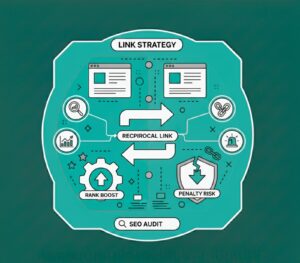How Predictive Content Marketing Is Transforming Modern Search
Blogs | Category
Written By: Lauren Davison
Introduction
As our digital landscape accelerates, search prioritises intent anticipation over simple keywords. The algorithms evolve, and users become more specific in their searches. The way of creating content must also evolve. That is where Predictive Content Marketing comes in.
Predictive content marketing is not a trend; it is a transformation. It is suitable for small business owners, digital marketers, and local service providers. It is about using data, AI, and user insights to create content. This meets people’s needs before they even type them into Google.
Let us explore how this modern approach is reshaping local search rankings. As a result, improving visibility and driving deeper engagement.
Table of Contents
What Is Predictive Content Marketing?
Predictive content marketing is a strategy to lift data analytics, AI, and user intent. Forecasting helps to create content that anticipates future searches. Instead of reacting to users’ searches, you are addressing what they search for next.
Forecasting User Behaviour
At its core, predictive content marketing is search behaviour analysis. Marketers can predict the next wave of interest. Studying historical data, clicks, queries, dwell times, and emerging patterns helps to predict.
For example, a local HVAC business notices searches for “energy-efficient heating” every October. Predictive content allows them to publish blog posts and videos addressing this topic. This must happen before the seasonal spike. As a result, positioning them as the go-to source when demand peaks.
Moving Beyond Traditional SEO
Traditional SEO focuses on targeting keywords that are already ranking. Predictive content focuses on user intent forecasting. It is the art of understanding why people search and what they will search for next.
This shift moves content strategy from reactive to proactive. It allows marketers to lead search trends rather than chase them
Why Modern Search Demands Predictive Content
AI and Machine Learning in Search
Today’s users expect instant, relevant, and actionable results. They want content that does not answer a query; it solves a problem.
This is where experience-driven SEO connects with predictive content. When your website provides content that anticipates user needs, it should take action. It must enhance the experience, reduce bounce rates, and boost chances of ranking. It must rank in featured snippets and local packs.
The Shift Toward Experience-Driven Search
Today’s users expect instant, relevant, and actionable results. They want content that does not answer a query; it solves a problem.
This is where experience-driven SEO connects with predictive content. When your website provides content that anticipates user needs, it should take action. It must enhance the experience, reduce bounce rates, and boost chances of ranking. It must rank in featured snippets and local packs.
Key Components of Predictive Content Marketing
Data-Driven Insights
Effective predictive marketing starts with data. Use tools like Google Trends, SEMrush, and Search Console to analyse:
Seasonal keyword fluctuations
Rising topics in your industry
Shifts in audience behaviour
This search behaviour analysis forms the foundation for identifying what your audience needs. It can be tomorrow, next month, or next season.
Content Personalisation
Predictive content marketing thrives on personalisation. By segmenting audiences, like homeowners vs. business owners, you can craft the content. It must resonate with each group’s pain points.
Personalised content increases engagement rates and builds trust. This makes your brand more relevant and memorable.
Contextual Relevance
Predictive content is not about timing; it is about context. You need to understand not only when people search, but also why.
Align your content with modern search trends. It can be voice queries, local “near me” searches, and seasonal behaviour patterns. Context ensures your predictive content remains useful and timely.
How to Implement Predictive Content Marketing in Your Strategy
Audit Existing Content
Start by reviewing your current content. Identify:
Which pages attract consistent traffic
Which ones show declining performance
Gaps where content does not align with predicted search intent
A content audit helps you see where your existing strategy might be missing upcoming opportunities.
Create Forecasted Content
Once you have identified those gaps, it is time to create forecasted content. Use:
User personas to define motivations
Intent mapping to align topics with the buyer’s journey
Keyword forecasting to spot emerging trends
For example, a digital marketing agency predicts “ Content marketing tools for small business.” They can prepare a resource guide before competitors catch on.
Integrate with SEO & UX
Predictive content must work hand-in-hand with SEO and user experience. Ensure:
Metadata reflects emerging search terms
Internal linking connects predictive pages to cornerstone content
Navigation is intuitive and supports longer session times
When SEO and UX work together, your content does not attract visitors; it converts them.
Measuring Success in Predictive Content Marketing
Engagement Metrics
Track how users interact with your predictive content:
Click-through rate
Dwell time
Scroll depth
These metrics reveal whether your content truly matches the intent you forecasted.
SERP Performance
Track ranking improvements, featured snippet captures, and organic traffic growth over time. Predictive content often results in early visibility for emerging topics. It gives your site a competitive edge.
Conversion & ROI Tracking
Predictive content should drive action. It should measure:
Form submissions
Service inquiries
Sales conversions
This helps determine whether your predictive efforts translate into real business growth.
Common Pitfalls to Avoid
Over-Predicting User Needs
It is tempting to chase every possible trend. But creating content that no one searches for yet can waste resources. Balance prediction with real data, and use trend validation before producing new assets.
Ignoring Quality for Quantity
Predictive content only works when it is valuable and credible. Avoid pumping out low-quality posts to “get ahead.” Focus on depth, accuracy, and authority.
Neglecting Continuous Analysis
Predictive marketing is not a one-time setup. Search behaviour shifts regularly. Update your content strategy with new insights. It can be from analytics, social signals, and market data.
Case Studies & Best Practices
Brands Successfully Using Predictive Content
HubSpot predicted rising interest in “AI in marketing” years before it peaked. Their early guides and resources still dominate search results.
Local service businesses (like landscaping companies) use predictive models to publish relevant content. They plan content ahead of season, capturing leads earlier.
Retail brands like Amazon rely on predictive algorithms to recommend products. Content before users even search is a direct extension of predictive content principles.
Lessons Learned & Key Takeaways
- Always confirm predictions with real-time data.
- Personalise your content around intent and context, not demographics.
- Keep refining based on engagement signals and algorithm updates.
The most successful marketers treat predictive content as a living system. They never take it as a static plan.
Conclusion & Actionable Steps
Predictive Content Marketing is no longer a “nice-to-have”. It is the next frontier in modern search. It is apt to upfront competitors. They are suitable for small businesses, SEO professionals, and local service providers. It helps meet user intent and build brand authority in evolving digital landscapes.

Written by - Lauren Davison
Introducing Lauren – one of our content writers who has a flair for SEO and creative strategy!
With a Master’s Degree in Creative Writing, Lauren has niched down into SEO and content writing.
Outside of work, she loves watching the darts, reading and the pub on the weekend.
Want some more?
Latest Insights & News

Reciprocal Links in SEO: Do They Still Boost Rankings or Risk Penalties?
For the keyword “reciprocal links SEO,” focus on explaining how reciprocal linking works today. Reciprocal links are not harmful by default, but Google can flag excessive or manipulative link exchanges. To stay safe, only exchange links when they are contextually relevant, natural, and valuable to users.

SEO as the Foundation of Digital Growth: Why It’s More Than Just a Marketing Tactic
When focusing on “SEO for business growth,” highlight how SEO directly contributes to long-term scalability. Modern SEO goes beyond ranking—it boosts brand visibility, qualified traffic, customer trust, and conversion opportunities. To optimize effectively, ensure your content covers user intent, builds topical authority, and leverages technical SEO elements like fast loading, mobile-friendly design, and structured data.

AEO Mastery: Step-by-Step Guide to Building AI Citations & Boosting Visibility
When targeting the keyword “AEO Guide to Building AI Citations & Boosting Visibility,” focus on Authoritative Engine Optimization (AEO) principles. AI-driven search requires clear, structured, and entity-rich content.
